It’s hard to find yourself without an intense spark of enjoyment when surrounded with Hrafnhildur Arnardóttir’s colourful artistry, whether it be her wearable pieces of furry clothing, sculpturesque masks made from human hair or her neon-light infused glass windows full of braids. She has showcased her work all over the world, with her latest installment currently happening in Australia and a collection with mega-brand &Other stories recently launched. Therefore I was more than delighted when she was able to take the time out to share a little chat with me in between her travels.
Congratulations on your new show in Australia! Can you tell me a bit about the works you’re exhibiting, is this the first time you’ve put up a show there?
Queensland Art Gallery of Modern Art, QAGOMA, in Brisbane, is celebrating the 10th anniversary of their Modern Art Gallery with a show that opened in December 2016 and is up until April 2017.
The show´s curator, Geraldine Barlow, contacted me early in 2016 after seeing my work Nervescape IV in the catalogue from the Nordic Biennial, Momentum 8 in Moss in Norway in 2015. The museum curator was looking for a vibrant piece to become central to the anniversary show at QAGOMA, titled Sugar Spin, and commissioned me to do a version of Nervescape that would cover about a 500 square meter surface, the largest installation I’ve undertaken so far.
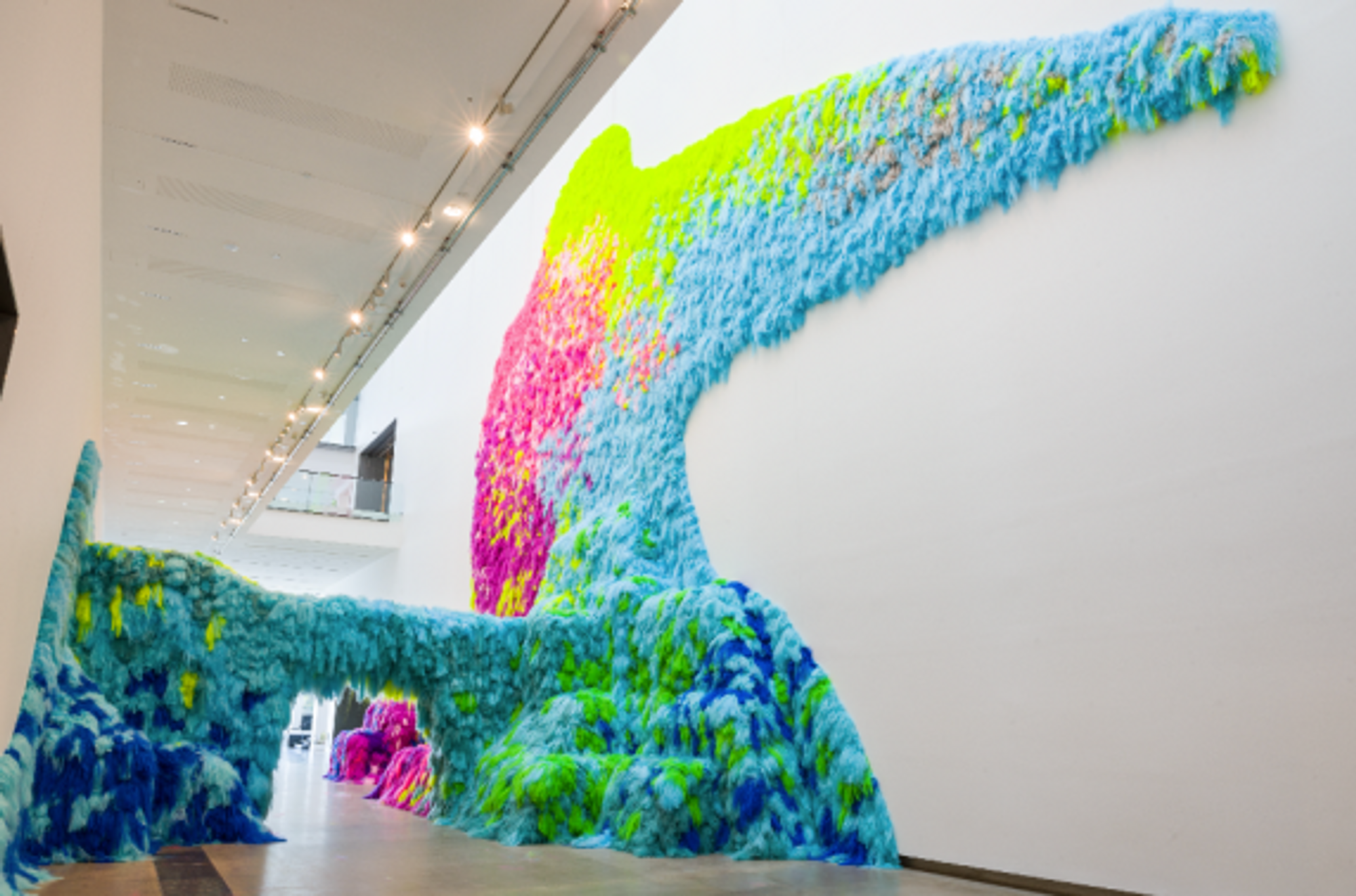
Hrafnhildur Arnardóttir, a.k.a. Shoplifter
Can you describe your work process a little bit, for example when creating an installation as big as the one you’ve put up in QAGOMA, do you make models and sketches first or do you focus more on intuition when entering the space? Is there anything you can’t be without when you’re creating?
In the case of Nervescape V in Brisbane, I had to work a bit differently since traveling twice to Australia was not a feasible option as it’s so far away.
So I had to adopt a much more flexible work method and learn how to delegate a lot of the preparation works to the team at QAGOMA. I soon realized that they were exceptional when it came to organizing and planning the piece, they calculated the volume needed and sourced the synthetic hair from China and it was shipped from there after I got to choose the colors I wanted to work with.
We worked with emails, images of the space, that I would draw on and send back so they could create digital drawings to plan the process in various steps of action.
I read in an interview with Geraldine Barlow, QAGOMA’s manager of International Art, that she feels that it’s important to understand “that people want a sense of delight and wonder, and a place that gives them an energy back” when they enter the museum. As I feel that your art portrays a certain playfulness, would you say you agree with this particular view, when it comes to experiencing art? What is most important to you when you view art?
When I am in the process of creating work in my studio or planning an installation it’s driven by my own excitement or inspiration of what I’d like to experience myself as a person in this world. I’ve found out that a lot of people enjoy the artwork tremendously as well due to our shared humanity. It’s as simple as that.
My goal is to follow my instincts in the belief that some viewers will share my interest in visual stimulation when it comes to colors, shapes and volume, be it tiny like the Nonsiclepieces I recently installed as a part of a group show in the Turner Contemporary in Margate, England, or very large as is the case in Australia. The wonder, delight or ponder is experienced because of our curiosity in an artist action, the execution of ideas by a creative mind and sometimes the sheer banality of art and the contradiction of how important and abstract this job is. It’s very hard to define and any attempt to find a solid conclusion eludes us because of the diversity of art and the different roles art plays in peoples lives.
To be looking for a finite explanation for the desired experience of an artwork is an impossible and absurd task, since we can’t generalize it and we don´t have to agree on it. We should simply celebrate the diversity and accept the variety. Some artwork speaks to us and some doesn’t, and that’s ok. We don´t have to agree on what’s good or bad, or what’s art and what´s design or craft. There is blissful and exceptional artistic achievement within all disciplines of creative activity, period.
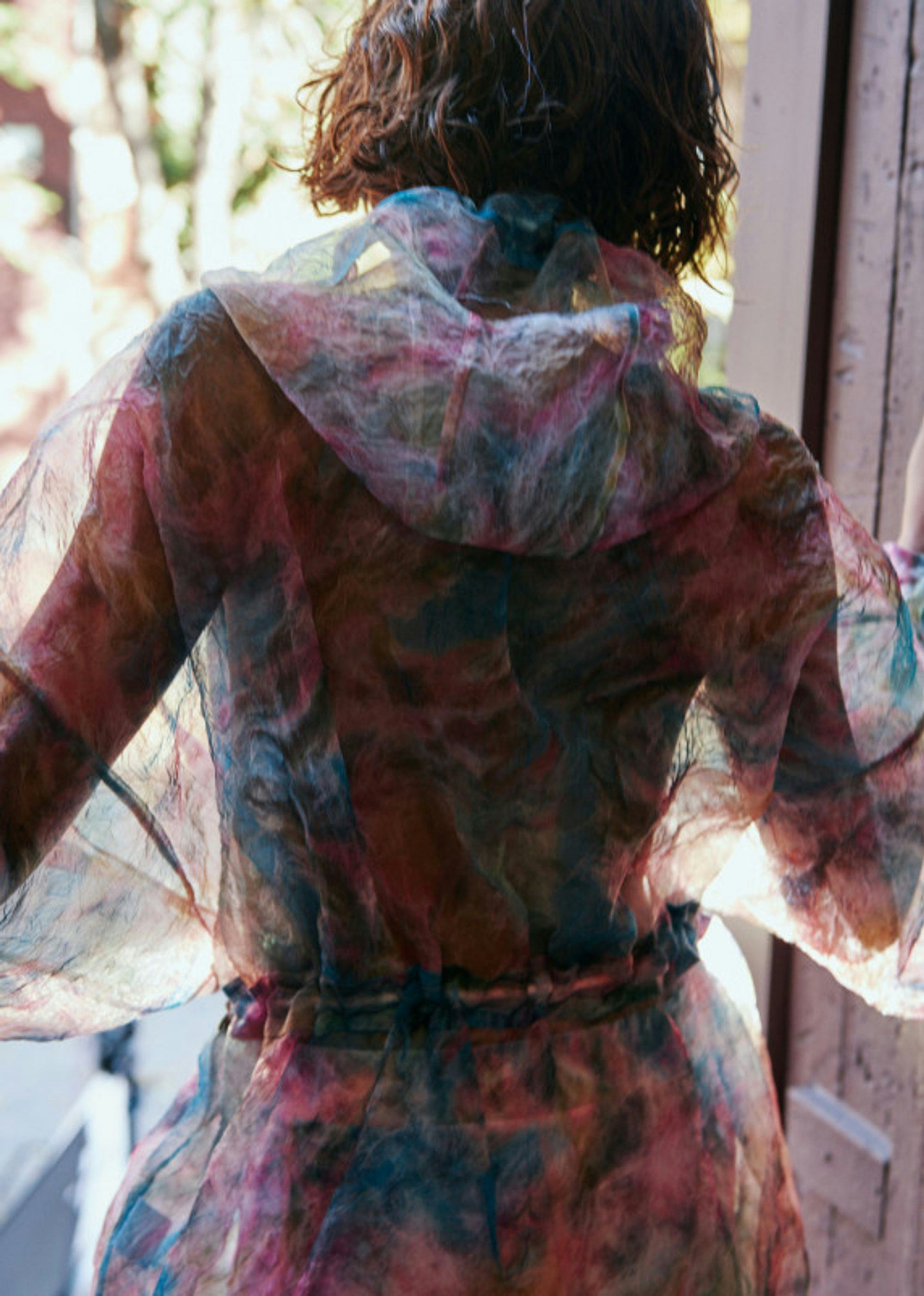
Hrafnhildur Arnardóttir, a.k.a. Shoplifter
You’ve been connected to fashion in many ways throughout previous years, you’ve taken part in the Nordic Fashion Biennale for example and with your most recent venture, designing for major brand & Other Stories. What are the biggest differences in creating art and design in your opinion and is combining the two something you’re excited to keep on exploring in your work?
It’s always come very natural to me to make wearable clothing or accessories. I’ve been doing it since I was at least 10 years old. I like dressing up and wearing ornaments. It’s a big part of who I am. I chose to be an artist first and foremost in order to be free from all logical limitations like the fact that you have two arms and legs and a head, therefore you have to take that into account when you create clothing. Your skin is sensitive to touch so wearing scratchy things isn’t pleasant etc. When I make art I don’t have to think about these things and can create sculptures and installations that only deal with the logic and limitations of gravity.
But I still love making wearables and have been collaborating with designers to make additions to their work from my sensibility and materials I use as an artist. It’s been the most fun when it’s the “finale”, sculptural pieces like me and Edda Guðmundsdóttir did for Victoria Bartlett for NYFW a few years in a row where you had a hairy swimsuit that had no intention of being used as a swimsuit and instead these non-sensible fashion pieces were photographed endlessly for editorials and magazines and worn by musicians as performance pieces. That said, I was delighted by the challange of making wearables based on my work that would be comfortable and logical pieces of clothing for everyday use. When & Other Stories approached me I was ecstatic, since the only guidelines were that the capsule collection should reflect my artwork as best as I saw fit. They gave me all the support a rookie designer needs when it comes to sourcing fabrics and hardware, preparing print files, pattern making, producing samples for my approval etc. It’s a dream come true. Of course we had limitations because of the number of items and time to develop some ideas into objects, but over all I’m very pleased with the outcome and can’t wait to share it with people. I will continue to allow myself to do wearables as I choose to call it, as long as I’m inspired to do so and have the ability. But my first love is art, fashion is my mistress.
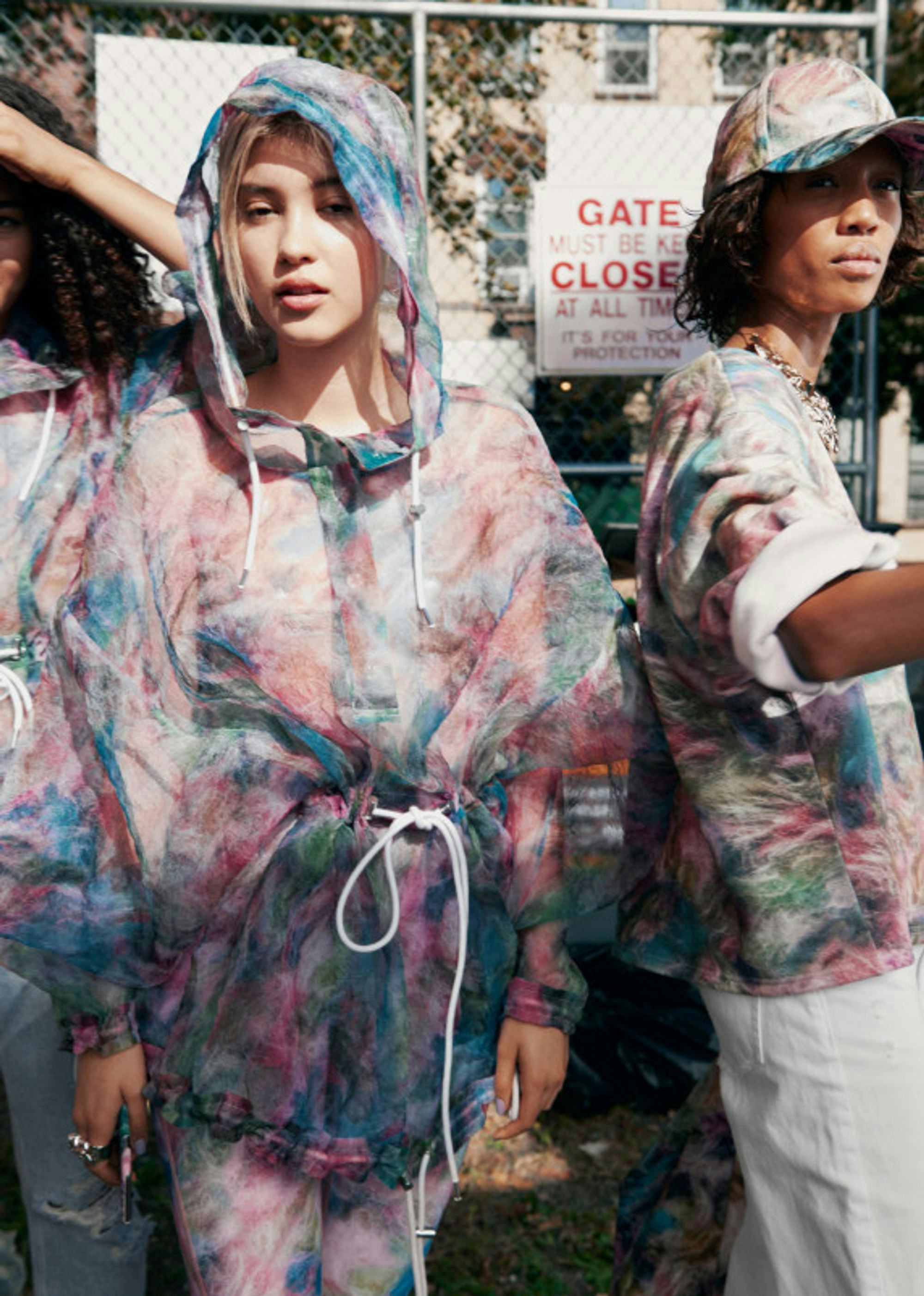
Hrafnhildur Arnardóttir, a.k.a. Shoplifter
I remember reading somewhere that you learned a traditional method of braiding hair, that you used in the Medulla artwork for Björk for example. What are your views on traditional craftsmanship within the art world, is there a need for balance between the ideological/conceptual and the traditional in art?
I learned to braid hair when I was a kid, the album cover image of the “hair helmet” is basket woven human hair and that’s just weaving in an organic inventive way. Then I wanted to use Victorian memory flowers made from human hair, an old craft dating back to the 16th century at least, that I attempted to replicate myself based on an old ornament I’d acquired as a teenager, but with not so good results.
So when I discovered that an Icelandic woman, Ásta Björk Friðbertsdóttir, had learned this old craft I contacted her for the project and I commissioned her to make a few branches for the Medúlla album, both from horse hair and human hair. Her artistry is beautiful and her brilliant craftmanship and dedication to this old technique really worked together with the braids and weavings I did with Björk´s hair. I have the utmost respect for craft and design and I like to celebrate the various techniques and ways people have found to be creative. It becomes “art” as in “modern art” when you manage to use the technique and transform what you make into something different than just a sample of a technique. We learn a craft, anyone who really wants to, can learn to draw well or make a decent clay pot etc. Someone long time ago came up with a good way to do it and the craft has been kept alive from generation to generation. How you use this craft is where you can transform it into a work of art that interacts with modern art. To me it’s not enough to just repeat someone elses inventiveness and that makes you an artist. But I also believe that if you call yourself an artist you are one. The question is how many people agree with you and if that matters to you or anyone. Are you a part of a dialogue or are you happy feeling good about your art no matter where or how it fits within the concept of the artworld.

Hrafnhildur Arnardóttir, a.k.a. Shoplifter
You’ve been living a long way from Iceland in the past years, in New York to be exact. Can you tell me bit about what it’s like working there and what it is about the city that inspires you?
I always suspected I’d live a long time abroad, like 6 years, I thought. And now its been 23 years in New York and I still love living here. These are two oppsites that support one another. I couldn’t survive one without the other.
In New York I found a way to free myself of preconceived ideas of what type of art I should be making, the icelandic culture is quite uniform and set although it’s rapidly changing to a more diverse society that I support and celebrate. I feel equally inspired by my background in Iceland and the life in NY, the city feels ever young and is constantly transforming itself and that keeps you on your toes. I can’t even begin to analyze the matrix that is the energy of the city, and the access and discovery of new art materials throughout the years has been mindblowing. I think I would probably be doing completely different artwork if I hadn’t lived in NY and been inspired by hairdos in Black and Hispanic cultures just by being in the city and observing my surrounding, I just don´t get tired of it. It feels so right and educational to live in a city with so much human diversity, it’s a privilege and an honor to raise my kids up in a city that requires a lot of tolerance and respect for different cultures.
New York is also very competitive and it pushes you more and in order for you to stand out you have to work for it. And it’s been challenging to keep at it, it inspires me to make artwork and trust in my uniqueness, as we all are different from each other and I keep true to my creative voice. I’ve been blessed to be able to work as an artist and not take another job since I first received 6 months salary from the Icelandic salary grant system. It transformed my work habits, I gave up working on the side for those six months and it allowed me the dedication needed to make better artwork uninterupted, it gave me improved confidence and my career started to take off as a result of it. I´m very grateful for it as it’s hard to succeed at the one thing you want to be, in such a competitive field, if you are busy making money doing something that’s not your calling or passion. Then you get busy also dealing with the frustration that comes with it and often depression of not having enough time to focus on your career.
Again and again I´ve seen how my career is elevated in direct response to every single month I’ve been on this salary. I’m tremendously grateful for it.
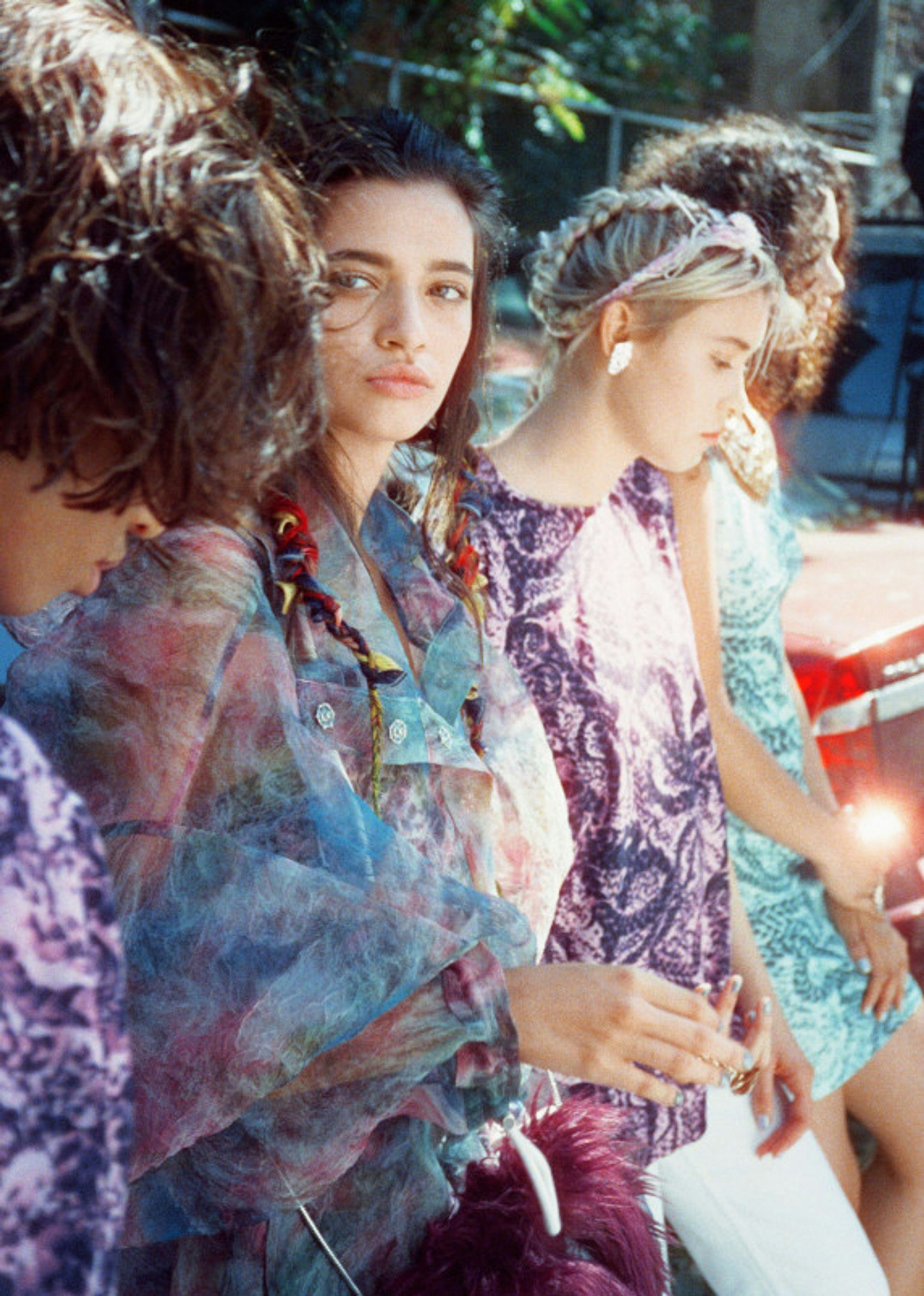
Hrafnhildur Arnardóttir, a.k.a. Shoplifter
Thank you for sharing that with us, might I ask what’s coming up next for you?
Shoplifter & Other Stories has now launched worldwide in stores. That’s going to be a new interesting experience, since I can’t call myself a closeted fashion designer anymore. I’m preparing a large installation at the LA Philharmonic in Los Angeles in April for the Reykjavik Music Festival curated by composer Daníel Bjarnason celerating great Icelandic music in the LAPhil´s beautiful building by architect Frank Gehry.
And in May I´ll be opening a solo exhibition at the National Gallery of Iceland with curator Birta Guðjónsdóttir in the main hall where I get a chance to show my work Nervescape that I’ve installed in 5 different countries so far, it´s going to be good to bring it home where the inspiration for it has its roots.
And with those last words our world just became a bit more colourful and exciting.
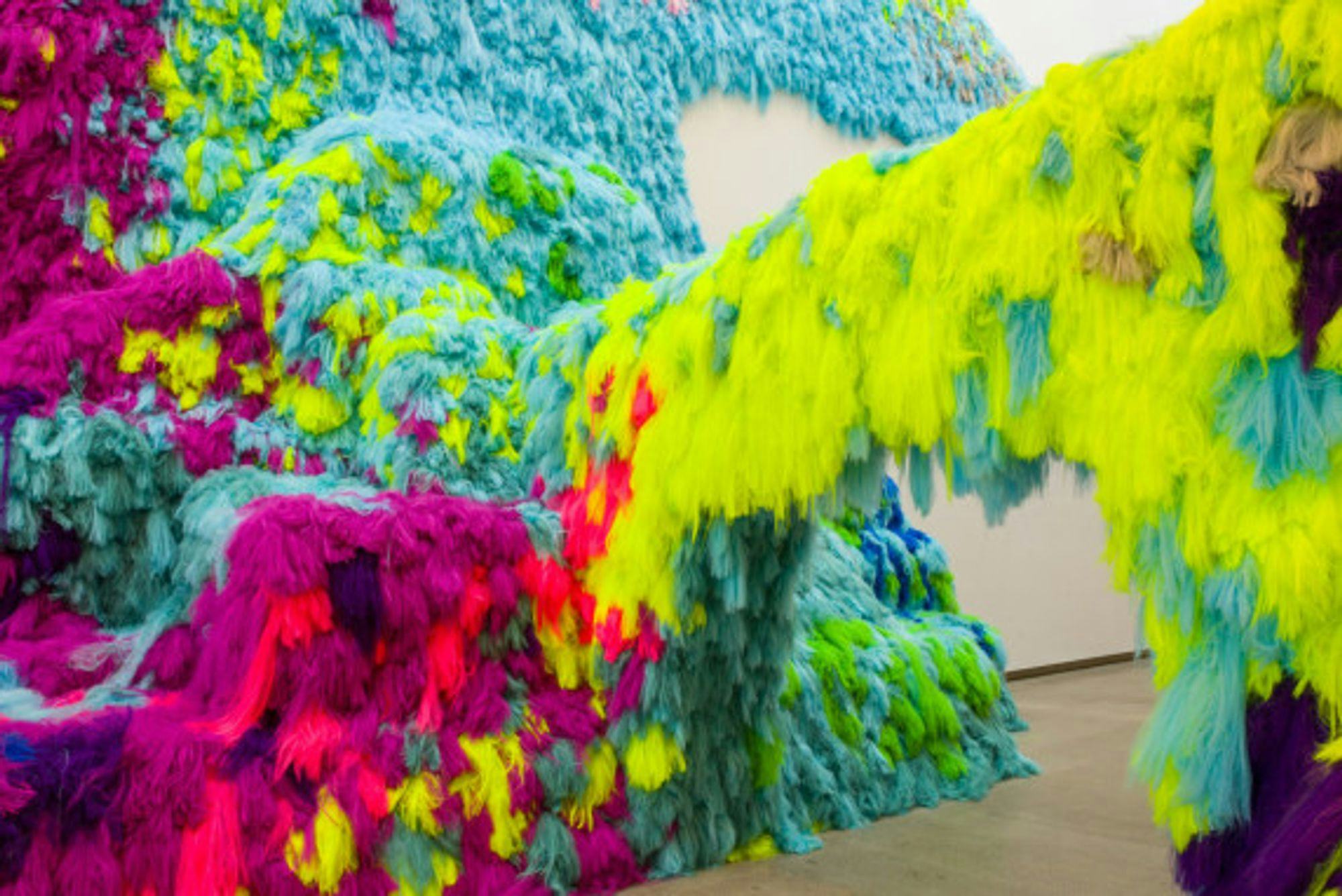
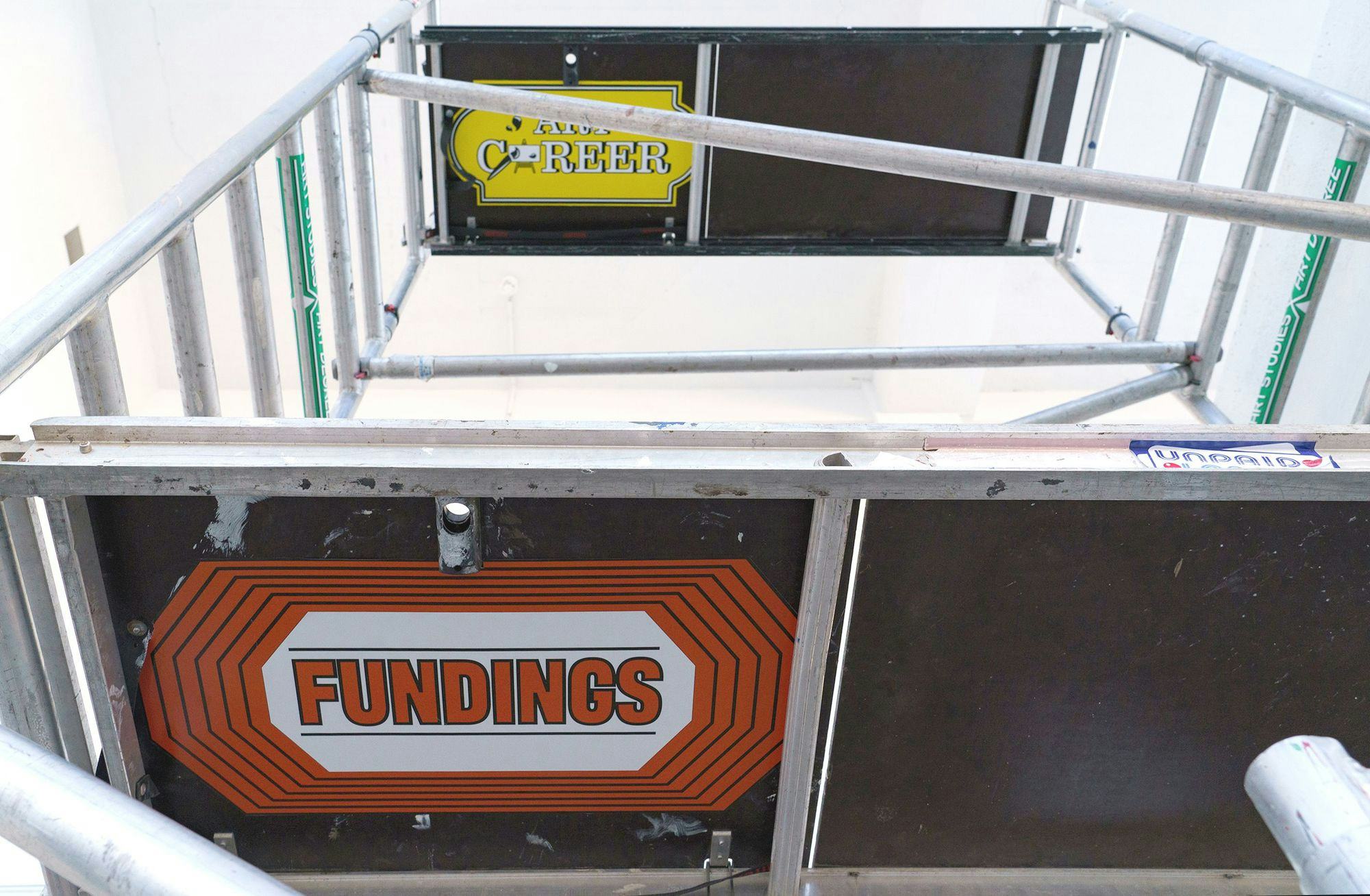
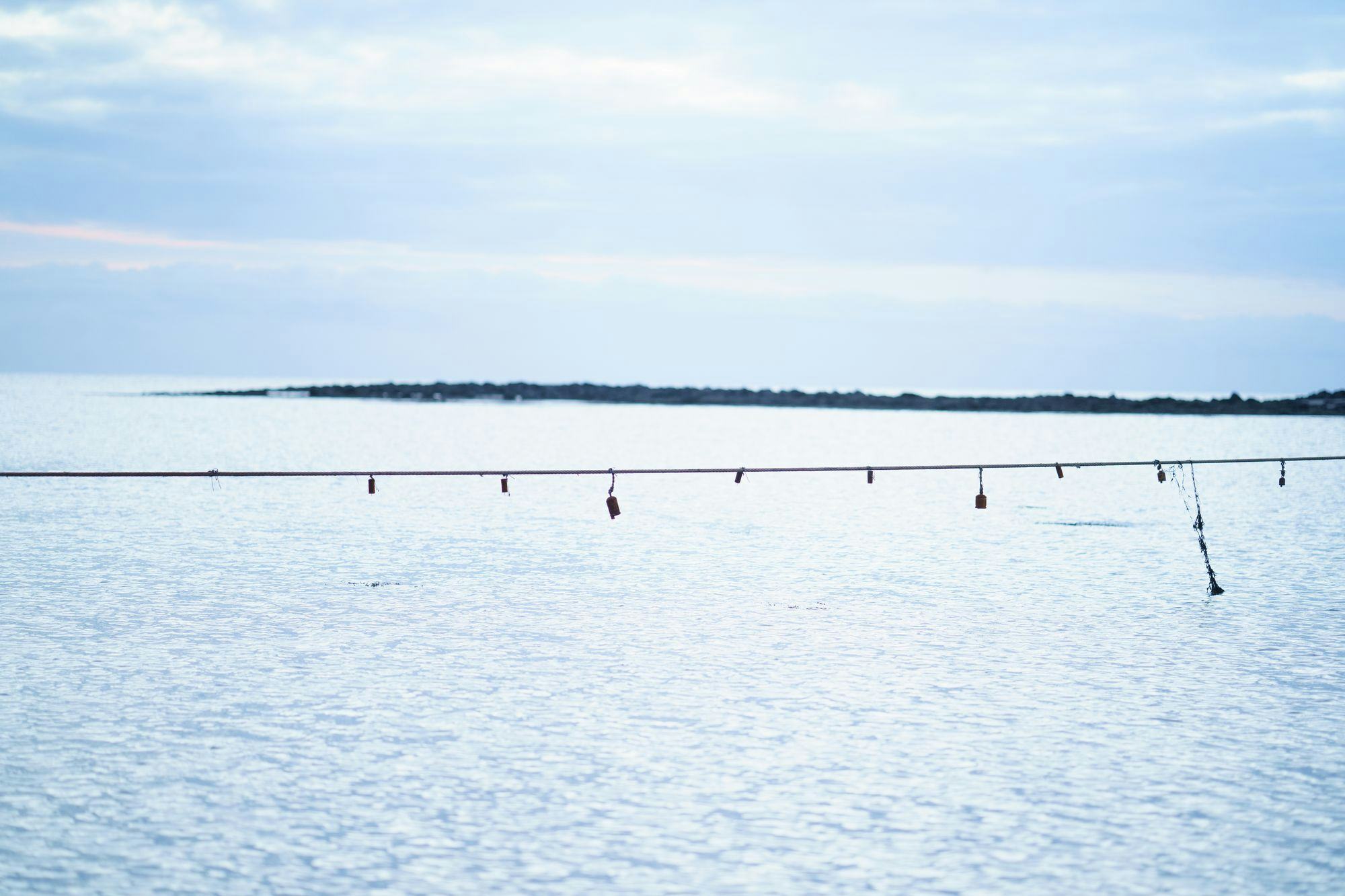
-icelandic-pavilion-2000x2667.jpg&w=2048&q=80)

